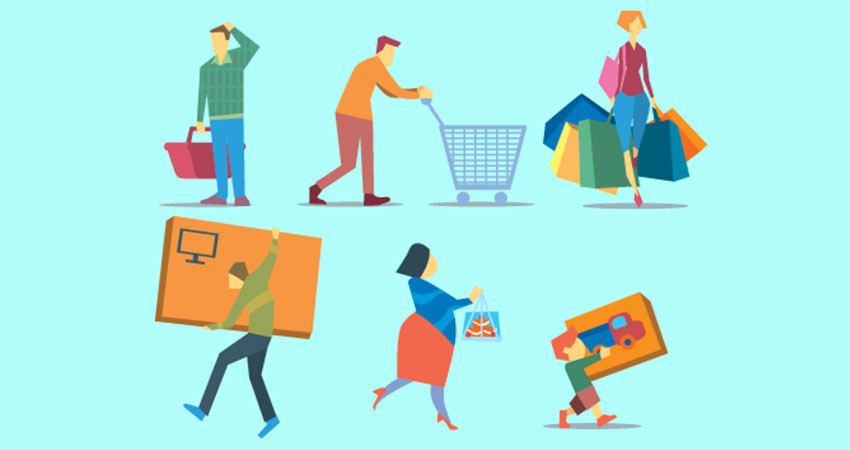While there appears to be no end in sight to the tumult of the retail landscape, behavioral science reveals that much consumer behavior is actually durable and predictable.
And while behavior is relatively well understood in academic circles, it becomes murkier in the context of marketing science – particularly because people are unable to recognize the true causes of even their own behaviors.
After all, if insights professionals listened purely to the narratives consumers provide, we’d believe that behavior is rational, with price being the only barrier to purchase. And, even as that’s what research respondents THINK they think, there’s far more which underlies human behavior.
Not So Secret After All
The first lesson that neuroscience teaches about consumer behavior is the importance of CONTEXT. Think about the role of context in your own behavior: Imagine someone asking “Why did you eat ruffled grouse for dinner?”
- Are you at home with your family?
- Are you out with your college friends?
- Are you on-the-road solo for business?
The point is CONTEXT is a crucial element in diagnosing consumer behavior, but often traditional market research overlooks its role.
Back to the contexts of consumer behavior…
- Why do people drink cola A vs. B?
- Why do people eat lunch food for breakfast?
- Why do people spend $25 to get an $8 cheeseburger delivered?
Pondering these questions in the macro sense is not only vague, it’s also inaccurate in terms of how people make decisions. Instead, marketers should consider three specific contexts which line up directly with the way brands and retailers activate insights:
Before They Shop
This is all about creating intent. And there are key insights into the ways brands can stand out from the noise within digital media by targeting shopper psychology.
The gist is: don’t just follow eyeballs – match psychology.
Based on neuroscience, we know that a person will engage with a social medium driven by one of four motivations:
- To learn and gather knowledge
- To connect and relate to peers
- To explore and take a “mental vacation”
- To brag
If your target audience is on Instagram to BRAG, for example, and your content tries to help them learn or connect, it will fail to attract attention and therefore fail to influence behavior.
The unlock is to evaluate not only WHERE your audience is (that’s simple), but WHY they’re there, and how your brand can help fuel that emotional goal – and earn coveted attention in the process.
While Shopping
This is the time to trigger purchase by targeting what drives shopping behavior “between the ears” to dramatically simplify omnichannel strategy.
Every brand and retailer attempts to capture shopper attention and influence purchase behavior, but a formula to achieve this remains elusive.
Once again, neuroscience provides the means by which to focus in-store or on-site activation based on what will capture the brain’s natural attention. And it relates to two durable means by which consumers shop: mission vs. ambient.
Mission Shoppers:
- Shop with a list, which is made well ahead of shopping
- They favor bricks-and-mortar stores
Once their decisions are made, shopping becomes a mission to complete as efficiently as possible. Their mental attention is focused on verbal communication – words and numbers as the means to quickly locate the products/brands in their mission, and move on.
Ambient Shoppers:
- Shop without a list
- Follow the store plan-o-gram or digital taxonomy to be reminded of what they need, making discoveries along the way
- Often show more enthusiasm for ecommerce shopping experiences
For these shoppers, the decision is in play all through the point of purchase. They rely on their five senses to identify favorite brands and make discoveries throughout shopping. Since their attention is sensory-forward, words and numbers blend into the background, with shapes, colors, motion, scents and sounds capturing interest and translating to purchase behavior.
To summarize, as you craft in-shop activations, ponder whether your core audience are “thinkers” or “feelers.”
When Using
Providing a good product is key. But, particularly in the current inflationary environment, promotions and shopper loyalty programs can be supercharged to drive dramatic increases in loyalty.
As much as insights pros, brand marketers and retailers know this, many discussions exclude the core truth of consumer behavior: People don’t buy products; they buy ways to make themselves FEEL BETTER.
During the Covid lockdowns products flew off shelves without the need for promotion. C-suite dwellers pondered whether it was a “reset moment” for the CPG industry to wean itself from the decades-long convention of heavy promotion.
That rallying cry has faded amidst inflationary pricing pressure, but shrewd managers will recognize that promotional activation remains a key strategic tool at their disposal, and a prime opportunity to differentiate.
Specifically, brands that focus promotions on consumer experience, rather than price, will win. It’s a simple equation and one corroborated by years of longitudinal data from our neuroscience-backed database. Think of it like this:
- Consumers are feeling stress at particularly potent levels (pandemic, inflation, social unrest, etc.).
- Everyday consumables brands are simple ways they can exert a bit of control over helping themselves feel better.
- Fear of disappointment and pursuit of worthwhile experiences far outpace mere price considerations (per our longitudinal database).
Therefore, the role of promotions is not to “race to the bottom” on price, but rather to elevate and amplify worthwhile experiences.
Sprite’s “Live from the Label” campaign is a prime example. Consumers aren’t in need of cheaper Sprite; they’re in need of unique experiences that help them feel better.
Whether before, during or after shopping, step back and reflect as to whether you’re matching not just the actions, but also the psychology of your audience, and reap the brand-growing benefits throughout your strategic activation.
Hunter Thurman is president of Alpha-Diver

